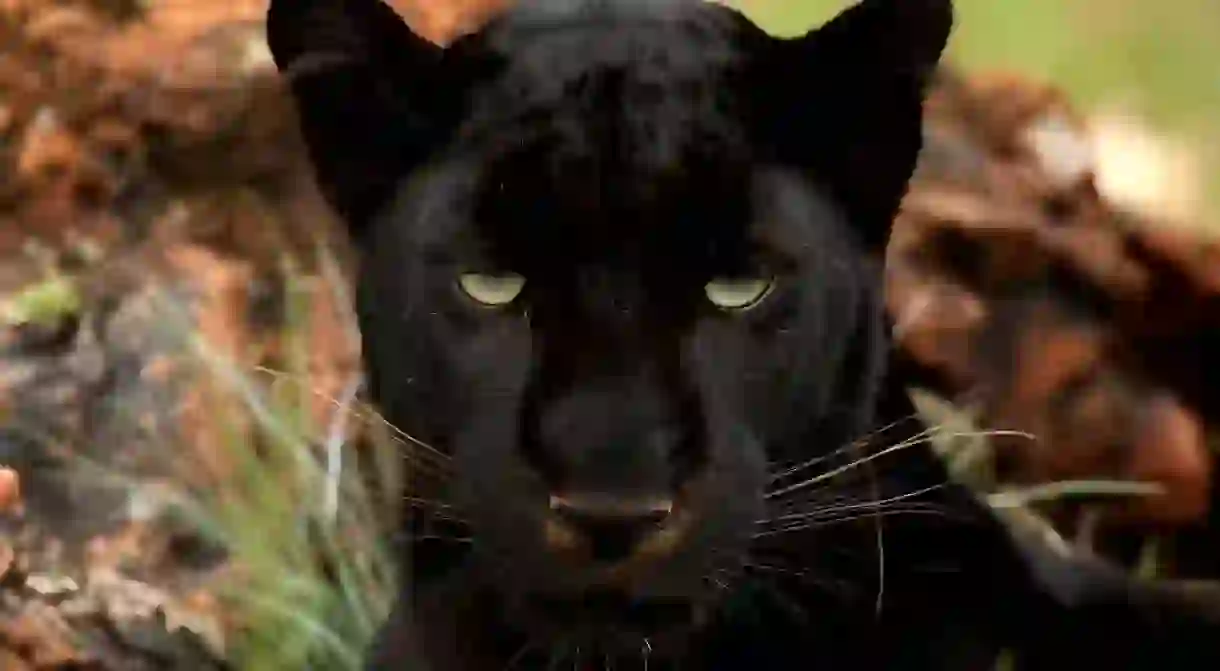The Truth Behind Coventry and Warwickshire's Urban Legends and Myths

From ancient tales to modern urban legends, Coventry and Warwickshire are areas that are filled with myths and mystery. Who was the Warwick knight who defeated a giant cow, why do locals commemorate the legend of a bag of gold with a football game, and just what is the mysterious beast prowling the Coventry countryside? Here, we take a look at some of the best myths and legends in Coventry and Warwickshire.
Guy of Warwick
The myth of Sir Guy of Warwick has been well known for centuries in Britain and France. The oldest surviving record of it from a 13th-century romance poem; it became an iconic romance tale of the Middle Ages. In the story, Felice, the daughter of an earl, attracts the attention of Guy, but his lower social status prevents marriage. Guy is defiant and becomes a knight to win her affection through acts of courageous chivalry, defeating quintessentially English mythical monsters like the Dun Cow (a giant cow rampaging the English countryside) and dragons; he fights in battles throughout Europe and makes a pilgrimage to the Holy Land.
Many related relics exist today in Warwickshire – a narwhal tusk masquerading as a ribcage bone and The Guy of Warwick sword among them (the latter of which he allegedly used to overthrow the Danish usurpers of the English crown); both are exhibited at Warwick Castle. As well as reflecting many values of the Middle Ages, such as chivalry and battlefield courage, the story was likely promoted to bolster the credibility of the newly instigated aristocracy. Anglo-Norman families would legitimise their feudal rule by linking their family heritage to such tales.

Atherstone Shrove Tuesday Ball Game
During the reign of King John, the town of Atherstone was said to have hosted a famous game of medieval football known as the “Match of Gold.” Warwickshire and Leicestershire contested a bag of gold with a good old-fashioned game of medieval football (some accounts even say the ball was a bag of gold) in a field between the two counties on Shrove Tuesday. Without any refereeing, the game descended into violent chaos, but Warwickshire came out bloodied yet victorious.
Whilst the game of football played today traces its roots to this game, it’s unclear whether such an event ever took place, but it’s certainly plausible with medieval football being common and occasionally being used to settle disputes. Regardless of the truth, a Shrovetide football contest has been held every Shrove Tuesday since in commemoration. Once a staple to many English towns, Atherstone is only one of two towns that now host a Shrove Tuesday Ball Game which is considered a staple of the town’s culture. There’s no greater testament to the power of myth than Atherstone’s annual ball game.

Churchill and the Coventry bombings
On the 14th November, 1940, Coventry was devastated by a Blitz attack. Out of this bombing came a pernicious myth which goes that Churchill allowed the Luftwaffe to bomb Coventry. Alan Turing had just cracked the Enigma code, allowing them to read German military messages, and Churchill allowed Coventry to be bombed with little resistance to conceal this fact. But historians are very sceptical.
The root of the rumour lies in a book called The Ultra Secret. The book was written by RAF officer F.W. Winterbotham, who wrote about Ultra – the codename for intelligence gathered from Enigma. He claimed Churchill ignored Enigma decrypts that warned of the bombings. But Winterbotham has been criticised by numerous historians, including Peter Calvocoressi, who was Bletchley Park’s head of Air Section and said that Coventry wasn’t mentioned; Churchill thus believed London was the target. Though there was a warning, there was little that could be done. However, the moral debate of whether such a hypothetical is morally justifiable has made it a compelling story that continues to be told.

The Beast of Barford
The Beast of Barford is a tale that captured the collective imagination of the village of Barford. In November 2004, a 5-inch long and 4-inch wide mud paw was found on Barford farmland; analysis from wildlife experts pointed to it being the paws of a big cat. This fuelled rumours already circulating of panthers and missing pets.
Two years later, the paw prints were handed to Warwick Museum for display. Warwickshire and Coventry are no strangers to big cat rumours; there have also been reports of panther sightings in Whitnash and Coventry. However, big cats such as the lynx were driven to extinction, and no Warwickshire panther culprit has been apprehended. One might even believe the paw and sightings have been incorrectly identified – or hoaxes. As a matter of fact, many famous sightings turned out to be hilarious hoaxes, like when a live tiger spotted in a Hampshire field was just a life-sized toy.

The Monk of Coombe Abbey
One of Coventry’s most famous ghost stories can be found in the Coombe Abbey Hotel, which boasts a rich 800-year-old history ripe for ghost stories. Numerous accounts from terrified visitors have told of self-slamming doors, footsteps and objects suspended and floating around rooms. The lightning rod of such paranormal activity is Abbott Geoffrey – a monk murdered in the hotel in 1345. With no other way to find justice, he resorted to the classic method of wearing a monk cloak and haunting people whilst floating around the hotel.
Another high-profile ghost is Matilda – a young girl who was a mistreated stable hand that died giving birth to the child of the master of the house. Before dying in childbirth, she cursed both the Craven family that owned the house and any future child that would be unfortunate enough to be born there. Not only were the Craven family afflicted with several children dying, but sightings from guests attribute self-slamming doors and footsteps to her.

This article was written in association with The Boar, a student publication based at the University of Warwick.













